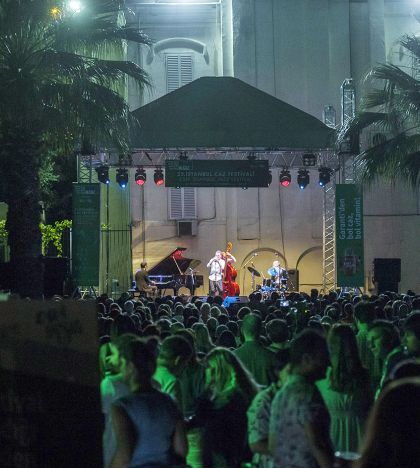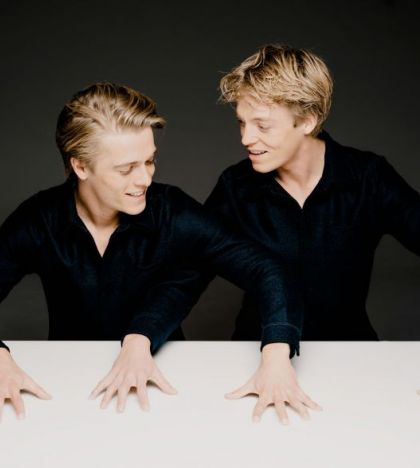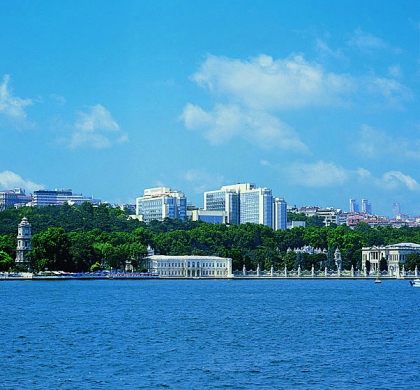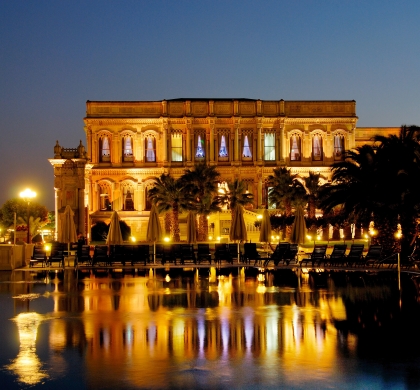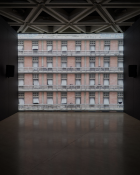The Tekfen Philharmonic Orchestra has recently enlivened our late-October evenings with a series of concerts in Ankara, Mersin and Istanbul entitled Autumn Classics. The one I attended on Friday took place in the Lütfi Kırdar Concert Hall, Istanbul. The first half was largely devoted to works showcasing the talents of the Italian trumpet-player Omar Tomasoni, one of the founders of the Italian Wonderbrass Quintet, while the second was devoted to Antonín Dvořàk’s Eighth Symphony. I hope I have got the composer’s name right, and the accents the right way up: being an ardent Czech nationalist, Dvořàk would get hot under the collar if anyone dared call him ‘Anton’, the German version of his name, and no doubt a misplaced accent would not have gone down too well either.
From the point of view of the works performed, it was not Italy or the Austro-Hungarian Empire (which then encompassed the Czechs) that dominated the first half, but rather Armenia, the USSR and the United States. Our first taste of Mr Tomasoni’s outstanding virtuosity came with Harutyunyan’s Trumpet Concerto, written in 1950. This is one of very few concertos written specifically for the instrument, the most famous being those of Haydn and Hummel. It was first performed in 1951, and is the composer’s most famous work. As Aleksandr Harutyunyan (1920–2012) received his training in the USSR, the piece is well orchestrated and contains many references to Armenian folk music (which is largely in the minor key).
The name ‘Harutyunyan’ is familiar to me as I once saw it inscribed on a plaque at the Surp Pırgiç Armenian Hospital in Yedikule, and asked my companion, an Armenian dictionary-writer who now lives in the old-folks’ home there, what it meant. He answered that ‘Harutyun’ means ‘Ascension’, so I suppose ‘Harutyunyan’ must mean ‘Son of Ascension’.
Mr Tomasoni, who comes originally from Brescia and has been chief trumpeter with the Royal Concertgebouw Orchestra in Amsterdam since 2013, is clearly in complete control of his game. The appealing modesty of his demeanour belies the brilliance of his tone. In the following video he performs with a Concertgebouw brass ensemble in a tango arrangement. He is the relatively clean-shaven trumpeter on the right.
Lastly, here are three videos of the Italian Wonderbrass Quintet in action in the three movements of Bach’s Violin Concerto in A minor (one video per movement), transposed down to G minor. This just goes to show that whatever you do to Bach – play him underwater with conch shells for instruments, even – he always sounds good. Unfortunately, the camera is so distant from the stage that I cannot tell who the trumpet-player is. What is certain is that the concert is taking place in Brescia, Tomasoni’s home town.
Having finished the four-movement Eighth Symphony at his rural retreat in Bohemia in the autumn of 1889, Dvořàk was miffed to be offered only a measly one thousand Deutschmarks by Fritz Simrock, his publisher, for the right to print it. For his Seventh Symphony, an instant hit, he had been paid six thousand. Indeed, the composer was smartly rapped over the knuckles – and not for the first time, either – for writing things that were too long, thus making their printing a costly exercise. So Simrock’s offer was turned down, and the symphony was sold instead to the British firm of Novello, who considered it a privilege to buy the work. They were right. Its first performance, conducted by the composer himself, took place in Prague in February the following year, and was a great success. Two months later it was performed in London and was greeted with wild applause. In fact, the view was expressed in the British press that Dvořàk was the only living composer who could be regarded as a worthy successor to Beethoven.
Here are links to two critiques, the first from The Guardian and the second from a Czech website.
I have to say that the claim of profundity in the first critique does not strike a chord with me. Also, the fact that most of the themes in the Eighth Symphony are based on a rising arpeggio does not, in my view, represent much of an advance on the compositional technique Beethoven employs in his symphonies, with their thematically linked movements. Beethoven is more subtle, making use of inversions of the theme as well as playing creatively with the intervals that make it up. This is not to decry Dvořàk’s work, which is tuneful, well orchestrated, successful as an artistic whole and deservedly popular. I never fail to enjoy the swaying Slavonic waltz in the third movement – and who wouldn’t? The Eighth Symphony has immediate appeal but is in no way cliché-ridden, and is refreshingly direct without being simplistic or banal.
Yet again I was impressed by the Tekfen Philharmonic Orchestra’s co-ordination, and by the skill of its conductor. Leaving the concert hall I was delighted to see Nihat Gökyiğit, the founder of Tekfen Holding, holding court just outside the door leading to the backstage area. Though now bent with age – he is 93 – and obliged to lean on a stick, he is as mentally alert as ever, and is to be heartily congratulated on having had the vision and the foresight to found an orchestra all those years ago. True, the Tekfen Philharmonic is no longer truly international (Nihat Bey originally saw it as a way of bringing together musicians from many different countries, not all friendly towards one another), but none the less a highly competent one that now features a large number of Turkey’s talented new-generation instrumentalists.
I will conclude with links to a couple of performances of Dvořàk’s Eighth. The first is by the Vienna Philharmonic conducted by Karajan, and the second by the Berlin Philharmonic under the baton of a Czech, Rafael Kubelik. Take your pick. I do not judge, but I do advise you to listen to the third movement (the Allegretto grazioso) with a partner so that if moved to do so you can swing each other round the room in time to this heady, mesmerising waltz. A simple pleasure, perhaps, but a satisfying one.

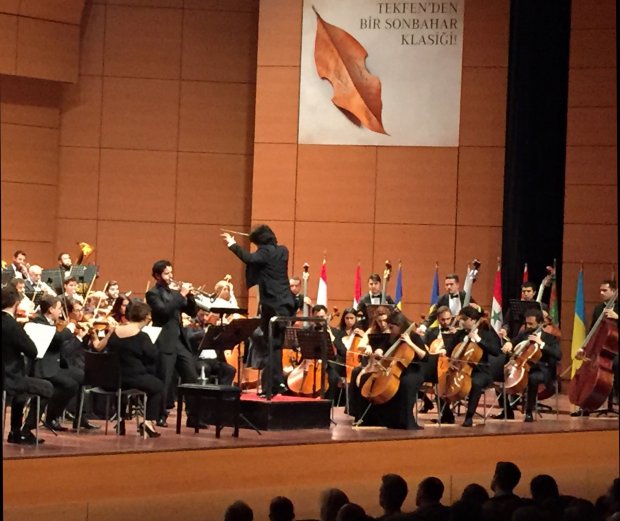

_420_468_80_c1.jpg)
